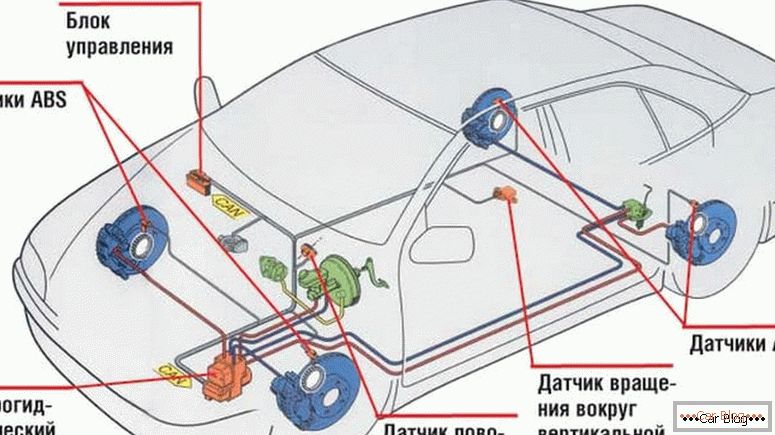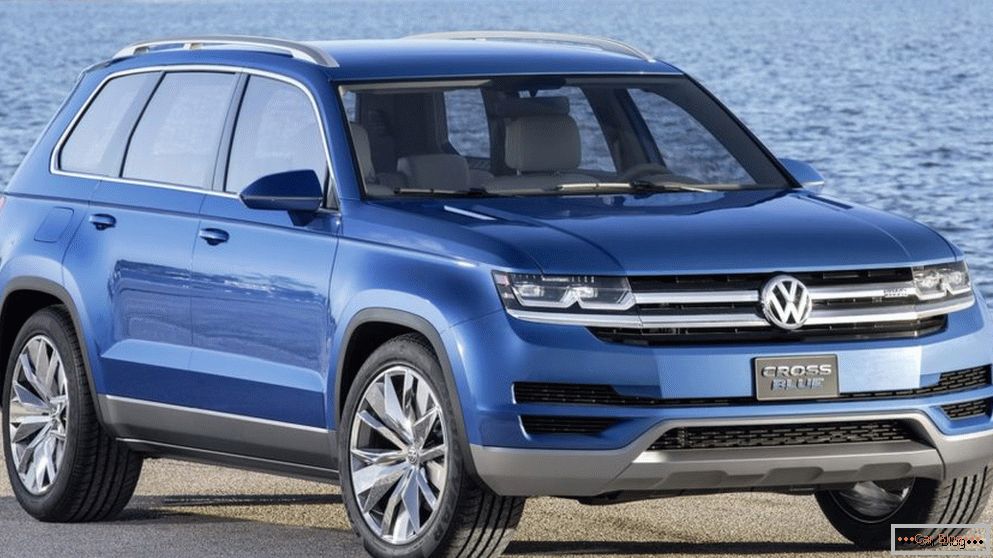Modern security systems in the car are a constant path of improvement since their widespread introduction into serial use. Most of them are designed and implemented in Western Europe or North America. These include ESP, what it is in the car, analyze further.
Content
- 1 Implementation of the concept in the automotive industry
- 2 What is ESP
- 3 How everything is arranged technically
- 4 Wide functionality
The introduction of the concept in the automotive industry
The story begins with the patent of 1959. At that time no one knew the concept of the exchange rate stability system, what it is, and the module was called a control device. The author of the patent was the authoritative Daimler-Benz. After that, it took almost 35 years of work to implement the development in real production cars. Although before that there were attempts to introduce at that time not such a perfect and rather cumbersome program to stabilize the movement of cars.
Since 1995, the first to know what an ESP is in a car were the owners of the stylish for those times Mercedes-Benz CL 600 coupe. At that time, it contained 11 different elements, unlike today, where their number dropped to four . Some time later, the system became mandatory for transport companies that have a classification of SL and S.

Until 1998, the serial installation was carried out on class “A” cars, but the machines were often responded by the company, since the optional module caused certain difficulties. A year later, everything returned to normal, and ESP was included in the basic equipment of most model classes.
The European leader in the production of stability control systems is Bosch. It introduces its products on products of such recognized world leaders as Volkswagen, Porsche, BMW, Audi, etc.
It is necessary to know that the installation of ESP units on motor vehicles from 2011 is a necessary procedure when new cars leave the assembly line in the European Union region, Canada and the United States.
Before explaining the operation of the ESP stability system, what it is in a car, it is necessary to understand the terminology. After all, it is also called a system of dynamic stabilization. Also in various world companies engaged in the release of vehicles, use their own developments in this field and use personal identification.
There are a variety of abbreviations avtokompaniyu to describe the system, which we decode:
- ESP (Electronic Stability Programme);
- VDC (Vehicle Dynamic Control);
- VSC (Vehicle Stability Control);
- VSA (Vehicle Stability Assist);
- DTSC (Dynamic Stability Traction Control);
- ESC (Electronic Stability Control).
If among the functions of the purchased car there is one of these symbols, then this is an excellent signal for the driver.
What is ESP
On a slippery road, the car behaves often in unpredictable ways. Not always even an experienced driver is able to respond to external negative factors in a timely manner. Vehicles can go into a skid. Then he loses control and his level of maneuverability decreases. To ensure stability on the highway in such a case helps the CAP.
See also: Which category is gazelleThe main task of the system is to create conditions for the car to go where the steering wheel is turned. A skid is excluded. The module uses many sensors. Their task is to track the direction of movement of the vehicle based on the position of the steering wheel and the degree of depression of the gas pedal. The control unit also processes the received data regarding lateral accelerations and the current orientation of a possible skid.
Курсовая устойчивость помогает водителю во время случайной неординарной ситуации, так how does ESP work in a car, держа под контролем динамику машины. Блокируется не только уход в занос, но и не допускаются боковые скольжения. Фактически система способствует выдерживанию установленного водителем курса, сохраняет траекторию текущего заданного маршрута и способствует стабилизации авто во время выполнения любого маневра.
CAP is relevant for roads with poor coverage, where the risk of care in uncontrollability increases significantly. Often, this is exactly what they call “anti-skid”.
How everything is arranged technically
Modern ESP refers to active high-level security systems. It consolidates several subsystems:
- anti-blocking ABS;
- EBD brake force distribution;
- Traction ASR;
- electronic blocking of the EDS differential.
The actuator is a hydraulic module. Also required attributes are synchronously configured sensors and blocks:
- stability sensor;
- wheel rotation sensor;
- a sensor that monitors the angle of rotation of the steering wheel;
- hydraulic pump, through which commands are given to the highway lines;
- electronic control unit.
The computer sends requests and receives feedback from sensors about 30 times per second. This module takes additional readings from the steering angle sensor and other control sensors. If the parameters obtained fall under certain characteristics, the CAP reassigns the supply of gasoline or diesel fuel, as well as the brakes. Thanks to synchronization, it is possible to align the vehicle in the direction of the front wheels.
You need to know that today the electronics adapts to the actions of the driver, and the person driving the vehicle directs the front axle. ESP only helps him achieve the desired result.
See also: What is the VIN-code of the carWide functionality
In extreme conditions, the possibility of influencing the brakes is sometimes a decisive factor in stabilizing the vehicle. When the front axle begins to slide to the side, the rear brakes are forced to engage. That wheel which is located inside the turning radius is blocked. Due to this condition, the front part of the car is leveled and not torn down.
There are situations when the rear axle is demolished from the road in the process of turning. The CAP in such an event blocks only the front axle. This is especially true of the side located on the outer turning radius.
There is a narrow-minded opinion that ESP prevents many drivers from driving a vehicle. The statement is fundamentally wrong, because a person cannot make decisions and bring them to life at such a high speed as electronics and hydraulics do.
Important! The developers of the implemented methodology assure that there are no situations on the road when the CAP can negatively affect the current situation.
In some cases, the owners of this module can expand its capabilities. For this, a set of progressive options is provided:
- Electronic hydraulic systems. When a sudden release of pressure from the gas pedal occurs, the event is perceived as an emergency by the electronics. To speed up the process of brake pads as close as possible to the discs.
- Brake discs with self-cleaning system. When driving through puddles or during bad weather, a small wet coating forms on the surface of the disks, which can reduce the coefficient of friction between the pads and the disks. Periodically pads on command electronics independently remove the layer of moisture.
- Soft stop function. Service contributes to a smooth decrease in the speed of the vehicle. This is facilitated by the decrease in pressure in hydro circuits during the braking process.
- The help in adjustment on the uneven covering located at an angle. Unauthorized rolling back cars on the slope during a stop is blocked.
- "Stop-forward." The option is in addition to the cruise control. Thanks to it, the distance from the front car is monitored. The function is comfortable for use in traffic jams and in some versions it is able to work without a driver.
- Auto brake when parking. It is an electrical analogue handbrake. To activate, squeeze the pedal all the way, and then press a special button that activates hydraulics.
Engineers do not stop at developments in this field, therefore the system will be further improved. Motorists, of course, it only pleases.



